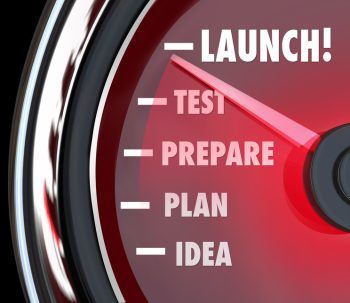
When you launch a new product, it can be complex and costly. Product Managers must consider many aspects to make product launches a success – and to avoid product failure.
But why do products fail?
There are often multiple reasons for failure, but here are 8 common reasons:
- Lack of understanding of the target market and customer needs. If you don’t know who your product is for and what customers need, your product is unlikely to succeed. For example, the Segway personal transportation device failed because it didn’t solve a real problem for consumers. It was a technology innovation – not a value-innovation for customers. (Read more from Blue Ocean Strategy).
- Poor product design and quality. If your product is poorly designed or low quality, it’s unlikely to attract and retain customers. For example, the Google Glass wearable technology failed because it was bulky, expensive, and lacked practical features. It also raised privacy concerns and led to ridicule of its wearers – but it’s not all bad news. (Learn more on Youtube).
- Inadequate market research and testing. If you don’t thoroughly research and test your product before launching it, you may miss key insights and opportunities. For example, the $400 Juicero juicing machine failed because consumers found it easier and cheaper to squeeze the juice packets by hand. (Read more on The Guardian).
- Misaligned pricing and value. If your product is priced too high or too low, it may not provide the right value to customers. For example, the Amazon Fire Phone failed because it was priced similarly to high-end smartphones, but lacked the same features and app-store capabilities. (Read more on Time).
- Difficult to understand or use. If you create something difficult to understand or use, you are increasing your odds of failure. For example, the Google Wave collaboration tool failed because it was difficult to explain and understand, leading to low adoption and usage. The original video to explain this hybrid product-platform-protocol was 80 minutes long… here’s a shorter version explaining Google Wave. (Learn more on Youtube).
- Poor product-market fit. If your product doesn’t fit the needs and preferences of your target market, it may struggle to gain traction. For example, the ‘Flights to Nowhere’ service faced wide-spread backlash from customers and environmental groups. (Read more on Insider).
- Lack of innovation and differentiation. If your product is similar to existing products and doesn’t offer unique or compelling advantages, it may not stand out and succeed. For example, the BlackBerry PlayBook tablet failed because it was similar to the iPad but lacked the same app ecosystem and intuitive user experience (Read more on Investopedia).
- Mismanagement of risks and challenges. If you don’t properly manage and mitigate risks and challenges, your product may encounter unexpected problems and setbacks. For example, the Samsung Galaxy Note 7 smartphone failed because of faulty battery design and manufacturing, leading to fires and recalls (Read more on Wired).
These are just a few reasons why products fail.
How to reduce product failure – the good news
But, the good news is that you can increase the chances of a successful product, with proper product management training.
You’ll be much better prepared when you understand requirements discovery, customer value propositions, market segmentation, and launching products…
While you’re here, you can learn how to launch products in our Product Management Journal on ‘Launching’ (PDF).
Have you seen or experienced other reasons for product failure?


Join the conversation - 14 replies
It really understandable👍👍
Good
Share cause of market failer
So useful as it highlights common product failure
We’re glad you found this blog helpful!
Really good
i like the explanation
It’s understandable
Glad you found it helpful!
Your answer really helped me thanks👍
Glad we could help!🙂
Nice
Great insights on the common reasons why products fail! I particularly appreciate the breakdown of misalignment with market needs and poor user experience. It’s crucial for any business, especially in the tech industry, to ensure they are solving real problems for their users.
As someone working in marketplace app development, I can relate to how important it is to continuously validate product ideas and keep an eye on evolving user needs. Marketplace apps, for example, often fail when the platform doesn’t meet the expectations of both buyers and sellers. Balancing the interests of all users while ensuring seamless user experience is key. Another important factor is scalability—many marketplace apps struggle with this as they grow.
I’d love to hear your thoughts on how these principles apply specifically to app-based products and marketplaces!
We’re glad you connected with our insights on product failures! You’ve made an excellent point about the unique challenges in marketplace app development—the delicate balance between buyer and seller needs creates an additional layer of complexity.
In the marketplace context, several of the failure points become magnified:
Network effects and the chicken-egg dilemma – Marketplaces face a unique challenge where value depends on having both supply and demand sides engaged simultaneously. Many marketplace apps fail because they can’t solve this fundamental bootstrapping problem effectively.
Value proposition alignment – As you noted, balancing different user groups is critical. Successful marketplaces like Airbnb and Uber succeeded by creating clear value for all participants, while failed ones often over-indexed on one side of the market.
Scalability challenges – This is particularly crucial for marketplaces where transaction volumes directly impact platform viability. Technical scalability issues can undermine trust just as the platform gains traction.
Trust and safety mechanisms – Many marketplace apps underestimate the importance of building trust between participants through reviews, verification, and dispute resolution.
For app-based marketplaces specifically, you might want to consider:
– Focusing on core transactions that create genuine value before adding features
– Creating strong onboarding that educates both sides of the market
– Implementing robust analytics to identify and resolve friction points quickly
– Starting with a focused niche before expanding to broader markets